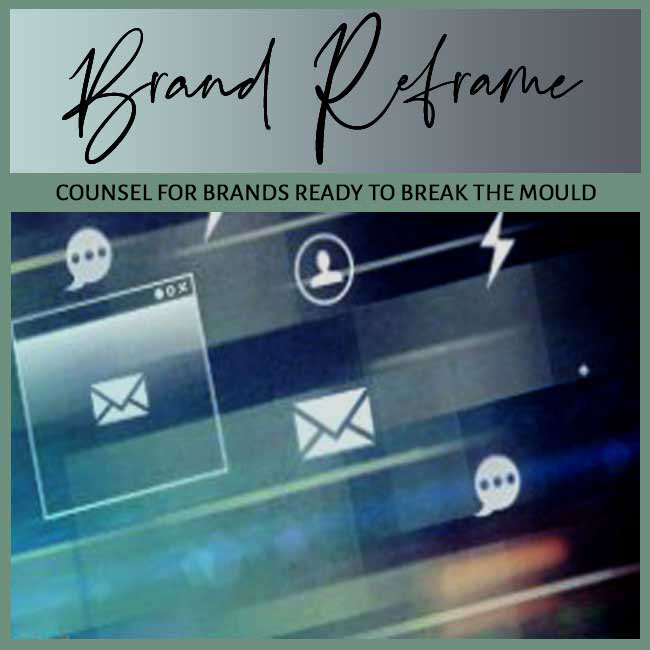
BY: SHOBHA PONNAPPA | BRAND BREAKTHROUGH STRATEGIST | 45 YEARS | 125+ CLIENTS
Brand signal is the clear, consistent set of cues that tells the market who you are, what you stand for, and why you matter. It is the distinct frequency your brand sends out through every message, design choice, and action. Strong brand signal cuts through the noise and helps customers instantly recognise you and trust what you offer. It shapes perception before a single conversation begins and draws the right audience toward you. A powerful brand signal helps audiences remember you without repeated explanations. When the market hears the same strong message everywhere, confidence builds naturally.
In my decades of consulting, I have seen that brand signal is more than logos or taglines; it is the sum of all recognisable patterns your brand projects. Every tweet, product detail, and customer interaction reinforces or confuses that signal. When brands lack clarity, the market hesitates and competitors gain ground. A strong, steady signal builds familiarity, credibility, and desire even before a product trial. This clarity encourages loyalty that lasts beyond price changes or fads. Clarity creates trust before a sale even begins.
Markets today are crowded, fast-moving, and algorithm-driven, making it harder to stand out. Search engines, social feeds, and AI-generated answers filter what audiences see, rewarding brands with consistent, credible cues. Brands with weak or scattered signals disappear in the noise, even if they spend heavily on advertising. A clear signal improves discoverability, memory, and authority in both human and machine perception. Consistency now drives both human recognition and AI visibility in measurable ways. Brands that master this visibility thrive even when competition rises.
A powerful brand signal creates compounding advantage. It attracts ideal customers who instantly feel aligned with your purpose and values. It helps investors and partners understand your value quickly and decide to back you confidently. It gives employees a sense of purpose and direction, reducing confusion and wasted effort. In an AI-influenced world where authority and clarity decide ranking and reach, a strong, unified signal is survival, not optional. Signal strength has become a key measure of brand durability.
A strong signal begins with an unshakable understanding of who you are and whom you serve. Brands that skip this work end up chasing trends and confusing audiences until their impact fades. I guide companies to define their purpose, promise, and personality with precision and courage. When your core identity is clear, every communication becomes coherent and compelling across channels. Customers quickly know what you stand for and feel safe trusting you. Clarity turns noise into resonance.
Clarity also streamlines decision-making inside the organisation so teams act with confidence. Teams know what belongs and what does not, reducing wasted time on off-brand ideas. Product innovation stays aligned with the promise and protects long-term reputation. Marketing campaigns feel unified, even across diverse channels and geographies. Investors respect a brand that knows itself deeply and communicates with precision. This internal certainty radiates outward as a strong, unmistakable signal.
Even great positioning fails if delivered inconsistently across customer touchpoints. Logos may be polished but tone might shift wildly between social posts and sales calls, confusing prospects. I help brands document their verbal and visual codes so every output aligns clearly and predictably. Consistency transforms random impressions into trust and familiarity over time.
Consistency builds recognition faster because audiences repeatedly encounter the same look and feel. Customers feel confident because they know what to expect at every stage of engagement. Search engines reward consistent names, visuals, and messaging across platforms, boosting authority signals automatically. Employees gain clarity, reducing wasted effort on off-brand experiments and mixed campaigns. Over time, consistency compounds into credibility and memorability with measurable impact. Predictable experience makes brands feel dependable and premium.
A signal only matters if it reaches the right audience instead of staying hidden. Many brands craft beautiful messages but remain unseen by the people who would value them most. I work with leaders to identify the best platforms and amplification methods for their specific buyers and investors. Careful targeting saves money while maximising visibility and reach. Visibility makes a strong signal impossible to ignore.
Visibility is not about shouting everywhere or following every trend blindly. It is about choosing channels where your ideal audience already listens and respects expertise. It includes optimising for search, cultivating media mentions, guest appearances, and trusted partnerships. Measured amplification prevents burnout and budget waste while maximising impact across markets. Well-placed signals spread farther, faster, and with authority that competitors struggle to match. Strategic presence multiplies every other brand effort significantly.
Signal without proof is noise because audiences verify claims instantly and distrust hollow promises. I encourage companies to collect and showcase evidence such as client results, case studies, testimonials, expert endorsements, and transparent practices. When your claims are backed by facts, your signal grows stronger and more persuasive. Proof anchors your signal in reality and protects against scepticism.
Credibility protects against competitive attacks by making your story resilient to doubt or misinformation. When evidence backs your narrative, you earn pricing power and long-term loyalty from customers. Search engines and AI also value authoritative references, strengthening your digital footprint automatically. Proof points keep your signal believable even as you innovate and expand globally. Over time, reliable proof helps you hold premium positioning despite new entrants. Authority comes from consistent evidence, not just strong words.
Founders should begin by distilling a clear positioning statement that guides all early actions and decisions. Too many startups chase virality before establishing their authentic voice and lose momentum quickly. Early clarity avoids later confusion and costly rebrands that damage trust. I advise identifying proof points early, even small wins or expert validations, to give your signal weight. Begin strong and stay recognisable to create compounding recognition. Early focus prevents painful brand drift later.
Authenticity is key because copying competitors creates forgettable brands without real resonance. Do not mimic generic trends or temporary buzzwords that fade with time. Build from your story, values, and real strengths that will stay true through market changes. Choose visual and verbal codes you can sustain without strain as you scale. Launch with a consistent tone across website, social, product, and support interactions. Early discipline creates a signal that scales without losing meaning.
As companies expand, new markets, hires, and partners can distort the original message without careful guidance. Leaders must codify identity and guardrails so the signal stays intact during rapid growth. I recommend brand audits, competitive monitoring, and feedback loops to catch drift early and correct quickly. Clear training helps employees deliver on the promise with confidence and creativity. Stewardship protects clarity as you grow and change.
Refresh without losing the core so your signal evolves but stays recognisable. Update visuals or tone to stay current but hold onto the emotional and strategic heart audiences love. Train teams on brand principles continuously to avoid accidental dilution of meaning. Celebrate signal-keeping wins so employees feel proud and invested in the mission. Staying current while keeping your anchor builds lasting trust in volatile markets. A living, evolving yet coherent signal keeps you relevant without confusion.
One major pitfall is inconsistency such as changing tone or design with every campaign and season. Another is overcomplication from trying to stand for too many things at once, confusing audiences. I often see brands focus only on visual identity while ignoring proof or clarity, creating shallow recognition. Such brands feel stylish but empty when customers test the experience closely. Signal fails when promise and perception diverge over time.
Another mistake is neglecting search and AI visibility when building authority in the digital era. Without structured data, authority content, and cross-channel coherence, even strong signals remain invisible online. Failing to evolve also weakens impact because yesterday’s cues may no longer resonate today. Brands that stop listening to customers or culture risk fading into irrelevance quietly. Successful brands monitor and adapt while staying true to their roots. Listening and evolving are essential to keep signal strength alive.
I worked with a specialised AI tools company that lacked recognition despite innovation and unique solutions. I defined their core identity and created a signal around “human-centred AI for business clarity,” making every message simple and authoritative. Consistent thought leadership, clear design, and proof points such as case studies followed to reinforce trust. Media coverage increased because journalists could easily understand and quote the brand’s stance. Sales cycles shortened as prospects arrived already convinced of credibility. Within a year, they became quoted experts in major media, drawing premium clients.
A long-standing publishing house had diluted its voice with random digital experiments and scattered campaigns. I simplified their message to “trusted curator of modern business thinking,” ensuring every output fit this positioning clearly. Visual standards were rebuilt to feel classic yet fresh, making the brand feel timeless but not outdated. Strategic content partnerships boosted reach among thinkers and decision-makers who value authority. Internal teams felt renewed clarity and enthusiasm to create aligned offerings. Their revitalised signal restored authority and attracted new authors and readers.
A small designer brand struggled with recognition beyond a loyal but limited following of enthusiasts. I refined its positioning around “subtle luxury for conscious modern women,” making each touchpoint elegant and sustainable. Tone, palette, and proof stories were unified to create a recognisable and aspirational presence. Visibility on select platforms where ideal buyers gathered sparked organic buzz and endorsements. Wholesale deals followed as international retailers recognised the strong, unique signal. Visibility on select platforms sparked global wholesale deals and influencer attention.
A fast-scaling EdTech firm faced credibility doubts as competitors questioned its results openly. I mapped proof points such as success stories, expert endorsements, and transparent user metrics to build confidence. Clear, credible messaging replaced jargon-heavy claims that confused prospects and reduced trust. Teams were trained to speak with authority and empathy in all customer interactions. Investors responded positively to the disciplined proof-backed narrative and expanded funding. This anchored their signal, improving retention and investor confidence.
A consulting firm offered brilliant strategy but blended into the market with generic messaging and visuals. I shaped its signal as “unusual breakthroughs for plateaued brands,” giving it a bold, ownable personality. Visual style was codified to look premium and distinct while staying true to expertise. Consistent thought leadership built digital authority and attracted attention from decision-makers. Higher-value clients came because the market could finally grasp the brand’s difference. The stronger signal attracted higher-value clients and keynote invitations.
An upscale décor brand risked feeling outdated as younger affluent buyers entered the market. I modernised its tone and visuals while keeping heritage cues that long-time customers valued deeply. Digital amplification was carefully selected to maintain prestige while expanding reach subtly. Customer experience was refreshed to feel exclusive but welcoming, balancing tradition and modernity. Social proof from designers and satisfied high-profile clients was showcased to reinforce credibility. The renewed signal attracted younger affluent buyers without alienating existing loyalists.
Branding creates identity and marketing spreads the message, but brand signal is the sum of recognisable cues that cut through noise across every touchpoint. It shapes perception in real time and builds lasting recognition beyond campaigns. Marketing may grab attention for a moment, but signal keeps it alive for the long term. A consistent signal turns marketing spend into sustainable equity that compounds. Clear signal keeps your brand memorable even in noisy markets. Strong signal makes campaigns more effective and cost-efficient.
Inconsistency, lack of proof, and overcomplication are the biggest threats to signal clarity today. Brands that change tone often, make vague promises, or skip credibility checks confuse the market quickly. Competitors then fill the gap with clearer, stronger voices that customers trust more. Disconnected design or poorly aligned campaigns make audiences doubt your seriousness. Over time, confusion reduces loyalty and pricing power drastically. When clarity fades, trust and authority decline fast.
Yes, but it takes discipline and structured effort to succeed over time. I have helped brands audit their current footprint to discover what is inconsistent or weak. Once gaps are mapped, we clarify purpose and refresh tone, visuals, and proof to match. Careful relaunches with sustained communication rebuild trust step by step. Recovery is possible but requires patience and unwavering adherence to the new standard. Rebuilding requires consistency and patience but can restore authority fully.
Codify identity, train teams, and monitor output with clear accountability as you grow. Create guardrails for tone, visuals, and proof so new hires do not dilute the message. Regular audits reveal drift early and allow quick correction before damage occurs. Leadership must model desired behaviour and prioritise brand integrity in all choices. Technology can support but should not replace human judgement about meaning and tone. Regular audits and leadership modelling maintain signal integrity at scale.
When markets shift, audiences evolve, or cues feel outdated and irrelevant to new buyers. Refresh proactively rather than after decline has already damaged loyalty and trust. Keep the emotional heart but modernise delivery so your story stays powerful. Regular reviews ensure visuals, tone, and proof remain contemporary and appealing. Cultural and technological changes often trigger the need for thoughtful updates. Timely updates preserve relevance without confusing loyal audiences.
They look for visibility, consistency, and proof-backed positioning across multiple channels and markets. Strong organic reach, clear authority signals, and credible endorsements show resilience. Repeatable customer acquisition and retention patterns signal durable equity beyond paid ads. Leadership clarity and cultural alignment further reduce perceived risk for investors. Brands with disciplined, proof-rich signals often command higher valuations. A strong signal suggests scalability and long-term resilience.
Explore Brand Signal Breaks … Real Cases & Fixes
Case Studies
FAQ Insights

"One BIG IDEA can turn brand stagnation into unstoppable movement. Spots are limited each week ... book your breakthrough session now."
Shobha Ponnappa
My Definitive Guides to Other Critical Branding Concepts
Smart insights, real-world frameworks, and idea-driven clarity – designed to help brands move.
Get my fortnightly Brand Reframe newsletter. Smart insights, distilled thinking, and focused momentum to help your brand lead.

Get my free AI strategy guide. Smart prompts, sharper briefs, and practical ways to make AI support your brand momentum.

Just fill in the form to join. Get my newsletter and the guide shown alongside, all with several game-changing tips.